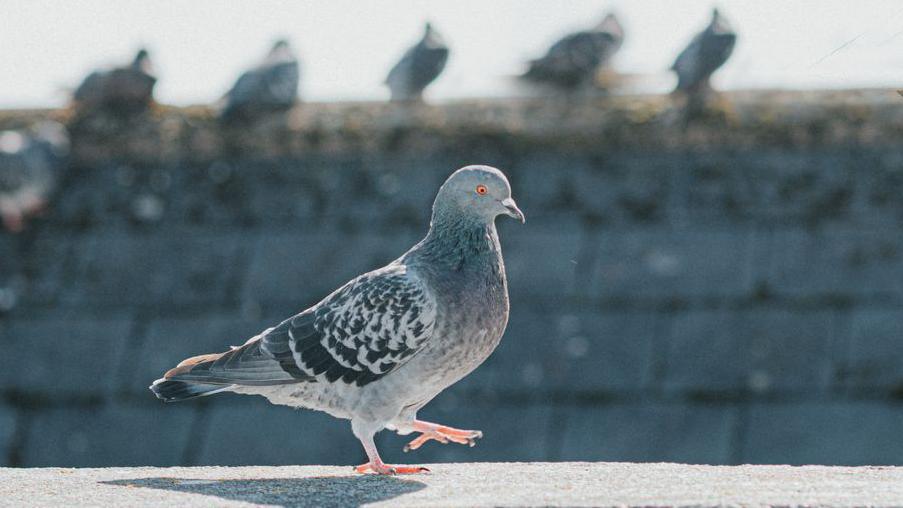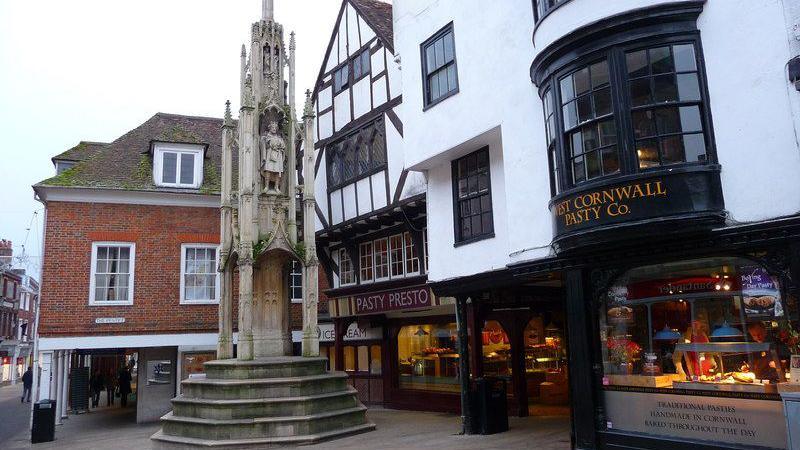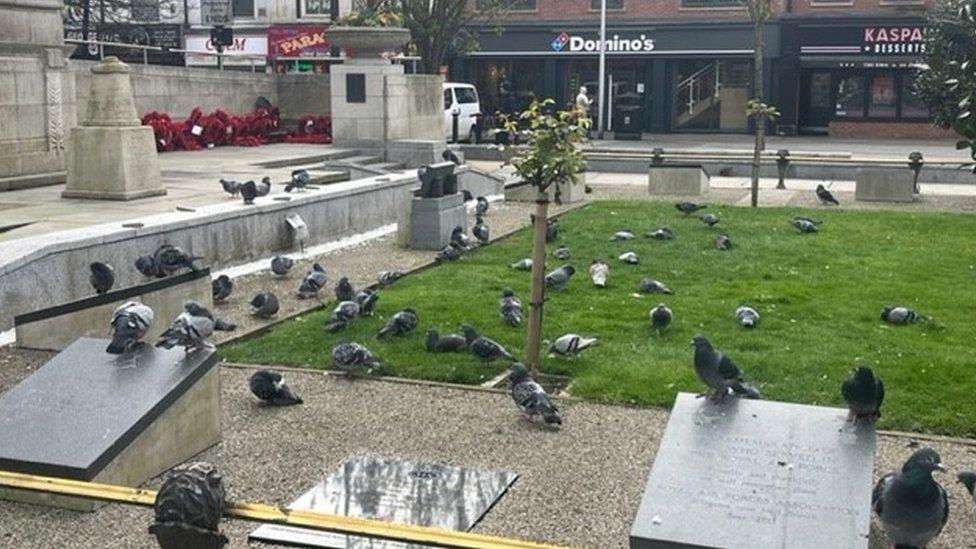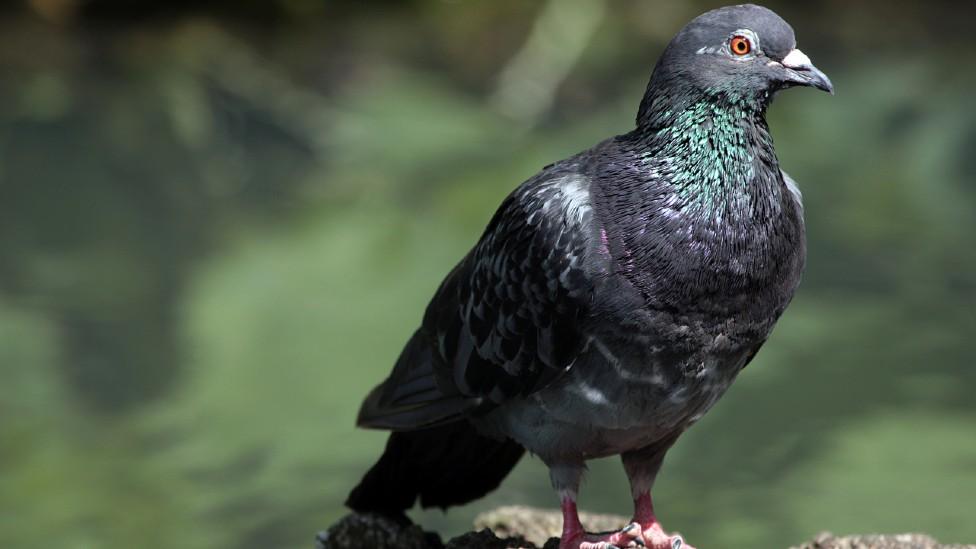Medieval monument pigeon-netting plan rejected

Pigeons droppings can cause staining and encourage biological growth on buildings
- Published
A proposal to use netting to protect a medieval monument from pigeons has been formally rejected by Historic England, the government's conservation authority.
The Grade II listed Butter Cross in Winchester has "significant deposits and staining" from the birds' droppings, a survey has previously found.
Consultants appointed by Winchester City Council said enclosing the monument with "discreet" stone-coloured netting might be the most effective way to preserve it.
However, Historic England said it had rejected the option in favour of gels, which deter pigeons from landing.

Winchester's Butter Cross is Grade II listed
The survey in 2023 found bird deposits, biological growth and damaged stonework on the 15th Century monument in Winchester High Street.
The council commissioned a conservation firm to propose pigeon deterrents, as well as methods for cleaning and repairs.
Consultants Philip Hughes Associates said optical gels, which "appear as flames or smoke to approaching birds", were the most realistic option.
However, the firm said they could only be used on flat surfaces such as the heads and feet of the monument's statues.
It said netting or spikes could be used on other parts of the structure, but were "visually problematic".
Historic England said it agreed that netting would be intrusive.
It granted Scheduled Monument Consent for works including the installation of gel trays and repairs.
The council says it hopes to begin the project in the next few weeks.
Get in touch
Do you have a story BBC Hampshire & Isle of Wight should cover?
You can follow BBC Hampshire & Isle of Wight on Facebook, external, X (Twitter), external, or Instagram, external.
Related topics
Related links
See also
- Published17 April 2024

- Published10 August 2022

- Published16 September 2013